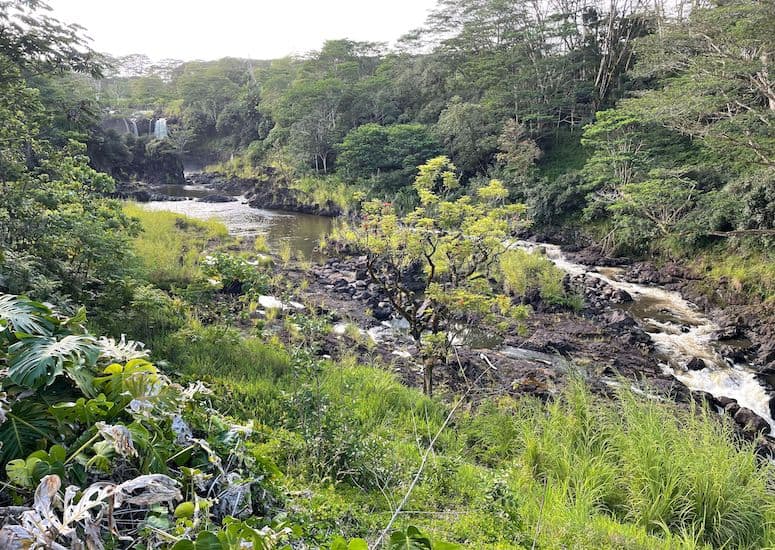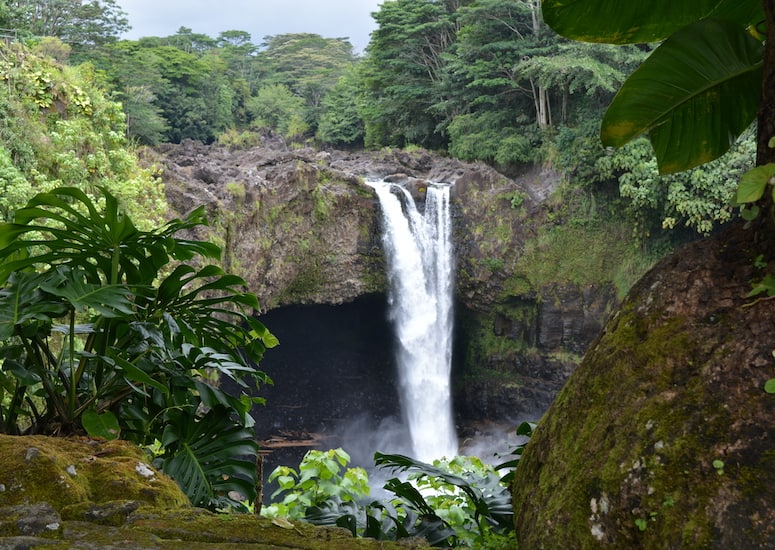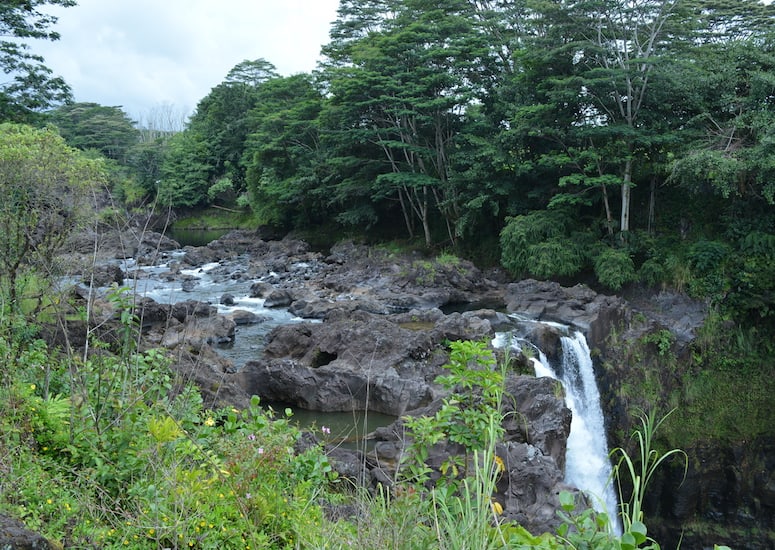From Ancient Eruptions, a River Forms
Volcanoes brought Hawaii into being and shaped the entire landscape of the Big Island. Nowhere else is this more true than along the slopes of Mauna Loa and Mauna Kea, Hawaii’s largest volcanoes by volume and height, respectively (to dive deeper, check out our post about all the island chain’s different volcanoes and their varying characteristics).
Over tens of thousands of years, lava flowed from their summits during significant eruptions. The area’s continual rainfall carved a river into the volcanic slopeside, flowing 18 miles from summit to beach. Aptly named Wailuku River, or “water of destruction” for its power, it’s the second-longest river in Hawaii and reaches its end spectacularly in Hilo, where its rushing waters cascade over Rainbow Falls and the unique “boiling pots” before emptying into Hilo Bay.


Rainbows at Daybreak
Wailuku River State Park, located just 30 miles from our doorstep in Volcano, encompasses both Rainbow Falls and the upstream “boiling pots” section of the river. The state park is free and open from 9 am – 6 pm every day, and both scenic areas of the river are right off Waianuenue Ave, one of the main streets in downtown Hilo.
In Hawaiian, Waianuenue means “rainbow water” and is the native name for Rainbow Falls, as its massive 80-foot waterfall famously creates rainbow-tinted hues in the morning light. For the best chance at catching this magnificent sight, visit in the early hours when the morning sun hits the water at just the right angle. You’ll also have the added benefit of missing the huge crowds that descend on the state park in the afternoon.


Where the Water Boils and a Perfect Picnic Awaits
After taking in the gorgeous scenery of Rainbow Falls, head 1.5 miles upstream, where another waterfall (Pe’epe’e Falls) showcases the Wailuku River’s raw beauty. Although smaller than Rainbow Falls, this section of the river is uniquely-contoured, making it appear to “boil” in certain spots, the water churning over the thousands-year-old volcanic riverbed below.
At times of higher river volume, especially during Hilo’s October-May wet season, the “boiling pots” are most impressive but equally dangerous. Flash floods are common and can sweep people away without warning, so heed the no swimming signs regardless of how inviting the boiling pot pools may look.
Stay with us and start making your Big Island itinerary, including a picnic along the flowing waters of the Wailuku River. Stop by the famous Hilo Farmers Market on the way into Hilo, where you can grab some tropical fruit and freshly-caught seafood. Then head over to the banks of Wailuku, where your picnic with a waterfall view will be one to savor, rainbows and all.
